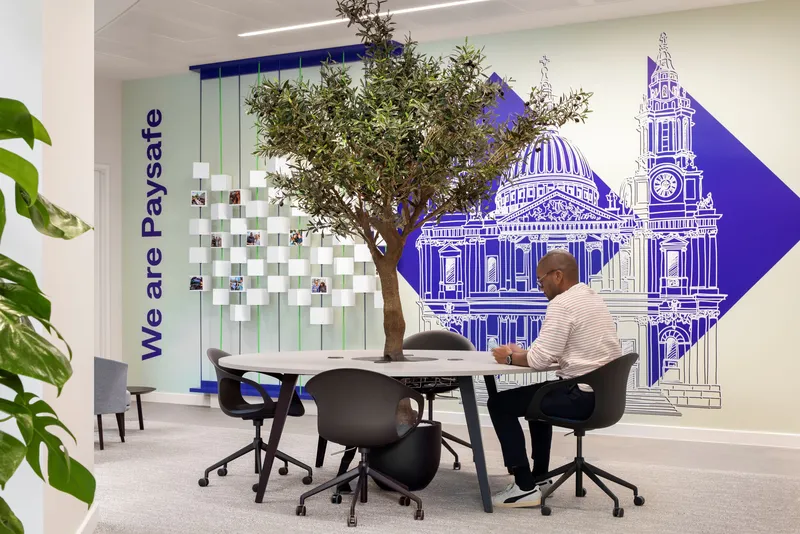25 octobre 2022
Tendances du secteur, Return to the Workspace Solutions
How the Office Can Help with the Cost-of-Living Crisis
Across the globe, the economic landscape is bleak. In the UK, inflation is at its highest rate in 40 years, with fuel, food and energy bills rising at an exponential rate. The impact of this is a substantial increase in the amount of people living in poverty and with winter fast approaching, the situation has triggered a cost-of-living crisis.
Around 9 in 10 (89%) adults in the UK report that their cost of living has increased, a rise of 37% from November 2021 to August 2022. This impacts businesses in a number of ways and as such, many employers are looking for opportunities to better support their employees through a difficult economic situation. In this article, we’ll be looking at the role of the office and how employers can help with the cost of living.

Impact of the Cost-of-Living Crisis on the Workplace
For workplaces, the overarching impact of the cost of living crisis is a rise in stress among the workforce. A 2022 Champion Health report found that financial pressure is the most common cause of stress outside of work (34%). Stress is intrinsically linked to wellbeing, affecting sleep, mental health and productivity for millions of workers as a result.
Additionally, the research found that the cost of living crisis has not impacted everyone equally, with employees between the ages of 25 and 34 more likely to experience financial stress than their older counterparts. Interestingly, research by Aviva found that younger workers are more likely to engage with financial wellbeing support, offering an opportunity for employers to make a significant impact to those most at risk.
Stress, poor mental health and lack of wellbeing at work is not only an employer’s responsibility on an ethical level – it’s bad for business. Companies that don’t support their employees through times of high stress can expect reduced productivity, a decline in employee health, higher absences, a higher turnover rate and increased recruitment costs.

Strategies to Support Employees
In an ideal world, increasing employees’ rate of pay would solve the problem and help those dealing with financial stress at work, but as businesses also have increased costs to contend with, this isn’t always possible. Additionally, an increase in pay also comes with the caveat of an increase in tax contributions, or the potential to impact entitlement to benefits.
However, businesses can still invest in their employees by granting access to financial coaching or planning programmes. Businesses without financial resources can still offer workplace support by signposting free external guides and resources through their communications strategy.
A more effective way to support employees however, is to help by covering some of their outgoing costs. These include benefits such as:
- Free meals
- Cash allowances for remote workers
- Discounts on entertainment, retail or gyms
- Employee assistance programmes – offering free access to therapy
- Staff welfare benefits – some of these, such as free feminine hygiene products are covered by trivial benefit exemptions, at no cost to the employer.
- Remaining open to flexible working – a great way to reduce commuting expenses

It is best practice to ensure employees have access to mental health support all year round, no matter the current economic situation. However, during times of crisis, it’s even more important to ensure employees have access to supportive programmes.
Offering extra annual leave - frequently called ‘wellbeing days’ - to the workforce helps employees who are suffering from the side effects associated with stress. Not only is this of great use to employees, giving them time to recharge and putting them in the right headspace for work,it allows employers to understand the scale of the issue and opens a window of opportunity for HR to step in and offer further support where appropriate. It’s important to note that although this is an opportunity for relevant communications and extra information to be sent to employees, leadership teams must respect their privacy and abide by a no-questions-asked policy for wellbeing days to be truly effective.

How Workplace Amenities Can Help
The role of the office post-pandemic is to provide an empathetic and thoughtful environment, where company culture and community thrive. During the cost-of-living crisis, this is even more crucial.
Design techniques to help promote health and wellbeing in the workplace are even more essential during times of crisis, and implementing biophilic design principles, offering space for socialisation and bringing home comforts into the office can go a long way in cutting back on stress.
Offering your workforce access to the office outside of working hours is a great way employers can show they care, allowing employees to save money on their energy bills if needed.
Zoning the office, so that employees have private areas to unwind in is a great way to extend a helping hand. Providing booths and smaller focus areas gives employees a dedicated space for coaching, mentoring and solo reflection, encouraging wellness by ensuring privacy for intimate, confidential conversation and breathing space for people who need to gather their thoughts.

Partager cet article


















